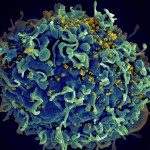Understanding how SARS-CoV-2 spreads within the respiratory tract is important to definethe parameters controlling the severity of COVID-19. Here we examine the functional andstructural consequences of SARS-CoV-2 infection in a reconstructed human bronchial epi-thelium model. SARS-CoV-2 replication causes a transient decrease in epithelial barrierfunction and disruption of tight junctions, though viral particle crossing remains limited.Rather, SARS-CoV-2 replication leads to a rapid loss of the ciliary layer, characterized at theultrastructural level by axoneme loss and misorientation of remaining basal bodies. Down-regulation of the master regulator of ciliogenesis Foxj1 occurs prior to extensive cilia loss,implicating this transcription factor in the dedifferentiation of ciliated cells. Motile ciliafunction is compromised by SARS-CoV-2 infection, as measured in a mucociliary clearanceassay. Epithelial defense mechanisms, including basal cell mobilization and interferon-lambdainduction, ramp up only after the initiation of cilia damage. Analysis of SARS-CoV-2 infectionin Syrian hamsters further demonstrates the loss of motile cilia in vivo. This study identifiescilia damage as a pathogenic mechanism that could facilitate SARS-CoV-2 spread to thedeeper lung parenchyma?
This study has been poublished in Nature Communications on July 16th, 2021 : Nature Communications









